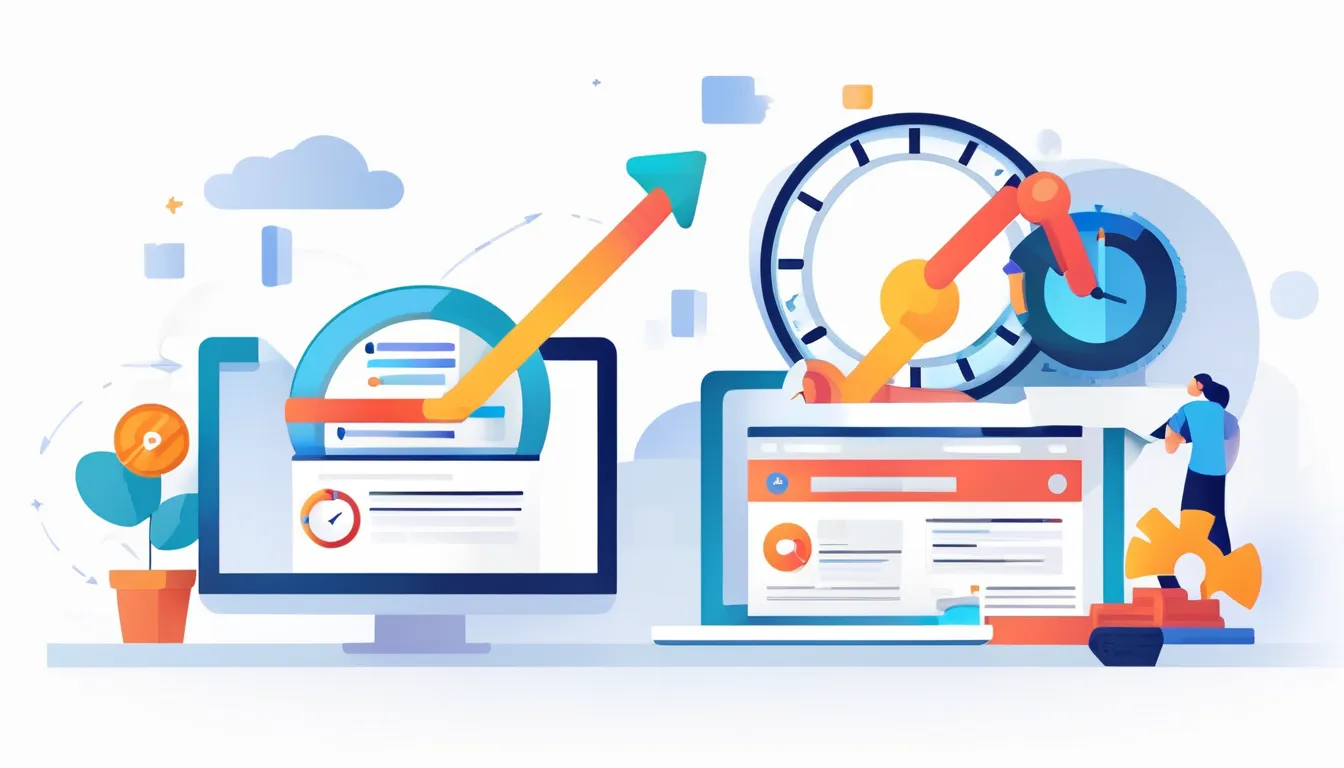When it comes to optimizing your website’s speed, Google PageSpeed Optimization is a crucial step you can’t afford to overlook. It directly influences user experience and can significantly impact your search engine rankings. By using tools like Google PageSpeed Insights, you can pinpoint specific areas that need improvement. But what are the key techniques that can effectively enhance your site’s performance? Understanding these strategies could lead to not just faster load times but also increased user engagement and retention. The real question is, are you ready to transform your website’s performance?
Understanding Google PageSpeed Insights
Google PageSpeed Insights is a crucial tool that frequently helps you evaluate your website’s performance. By analyzing your pages, it provides actionable insights to improve loading times and user experience. You simply enter your URL, and within seconds, you receive a score ranging from 0 to 100. A higher score indicates a faster site, while a lower score highlights areas needing improvement.
The tool breaks down performance metrics into categories like First Contentful Paint and Time to Interactive. These metrics reveal how quickly users see content and how soon they can interact with your site.
As you review the results, you’ll find suggestions tailored to your specific issues, such as optimizing images or minimizing JavaScript. Each recommendation is designed to enhance your site’s speed and functionality.
Additionally, PageSpeed Insights gives you the opportunity to compare your website against competitors. This benchmarking aspect helps you understand where you stand in your niche.
Importance of Website Speed
When it comes to your website, speed isn’t just a nice-to-have—it’s essential. In today’s fast-paced digital world, users expect instant gratification. If your site takes too long to load, visitors will likely bounce, leading to lost opportunities. You want to keep people engaged, and a slow website is a surefire way to lose their interest.
Moreover, website speed directly affects your search engine rankings. Ladezeit der Webseite verbessern prioritizes faster-loading sites, so if you want to improve your visibility, optimizing speed is crucial. Higher rankings mean more traffic, which can ultimately lead to increased conversions and revenue.
Don’t forget about user experience. A quick-loading site enhances usability and encourages users to explore more of your content. When users have a smooth experience, they’re more likely to return, share, and even recommend your site.
Key Factors Affecting Load Times
Website load times hinge on several key factors that can significantly impact user experience.
First, the size of your web pages plays a crucial role. Larger pages take longer to download, so optimizing images and compressing files can help speed things up.
Next, consider your server’s performance. A slow server response time can delay how quickly your site appears to visitors.
You should also look at the number of HTTP requests your site makes. Each element on a webpage, like images and scripts, requires a separate request. Reducing these requests by combining files or using CSS sprites can improve load times.
Another factor is browser caching. When you enable caching, returning visitors can load your site faster because their browsers save certain elements.
Lastly, the use of Content Delivery Networks (CDNs) can significantly enhance load times by distributing your content across various servers worldwide, bringing it closer to your users.
Techniques for Optimization
Optimizing your site’s performance involves a variety of techniques that can drastically improve load times and enhance user experience.
By implementing these strategies, you’ll not only keep visitors engaged but also boost your search engine rankings.
Here are some effective techniques for optimization:
- Image Optimization: Compress images without losing quality to reduce their file size. Use formats like WebP and implement responsive images for different devices.
- Minify CSS and JavaScript: Remove unnecessary characters and spaces in your code. This reduces file sizes and speeds up loading times.
- Leverage Browser Caching: Set up caching to store frequently accessed resources in users’ browsers. This minimizes load times for returning visitors.
- Use a Content Delivery Network (CDN): Distribute your site’s content across multiple servers worldwide. A CDN reduces latency by serving content from a location closer to the user.
Measuring Your Progress
To gauge the effectiveness of your optimization efforts, measuring key performance indicators (KPIs) is essential. Start by tracking your website’s loading time. Tools like Google PageSpeed Insights, GTmetrix, or Pingdom can provide detailed insights into how quickly your pages load and identify specific areas for improvement.
Next, monitor your bounce rate. A high bounce rate often indicates that users aren’t staying on your site due to slow loading times. Analyze user engagement metrics, such as average session duration and pages per session, to see if visitors are interacting with your content.
Additionally, keep an eye on your Core Web Vitals, which include metrics like Largest Contentful Paint (LCP), First Input Delay (FID), and Cumulative Layout Shift (CLS). These measurements help assess how well your site provides a smooth user experience.
Regularly comparing these metrics before and after implementing optimization techniques will help you understand what’s working and what isn’t.
Don’t forget to set benchmarks and review your progress periodically. This way, you can ensure your efforts lead to tangible improvements in your website’s speed and overall performance.
Conclusion
In conclusion, optimizing your website with Google PageSpeed Insights is essential for boosting speed and enhancing user experience. By focusing on key factors like image optimization and minimizing code, you can significantly reduce load times. Remember, a faster site not only keeps visitors engaged but also improves your search engine rankings. Regularly measure your progress to ensure you’re on track, and you’ll see the positive impact on traffic and revenue. Start optimizing today!

